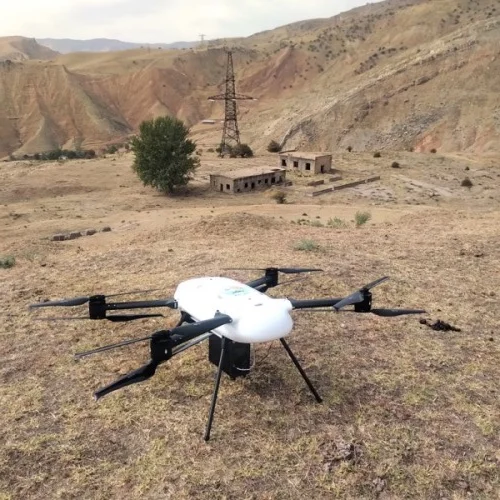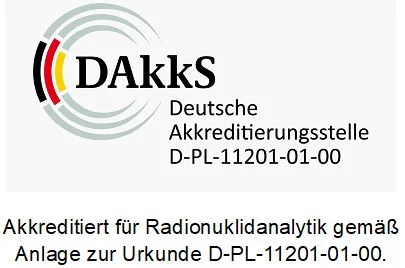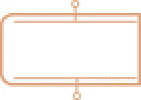 In-situ measurements, sampling, field works
In-situ measurements, sampling, field works
IAF offers site-specific sampling in addition to in-situ measurements
In-situ measurements (i.e. measurement of radiological parameters on site) help provide immediate, valuable guidance to targeted sampling of hotspots and development of effective, cost-efficient mitigation measures. IAF's unique connection between sampling and site work, radionuclide laboratory, consulting and interpretation of the results creates unparalleled competence and opportunities to precisely define the scope of sampling and analytics, to meet our customers’ needs and avoid unnecessary cost. Clearance measurements of in-situ campaigns are supported in terms of quality assurance by laboratory analyses of representative samples taken.
IAF provides the following on-site services at our customers’ premises:
- Sampling campaigns of drinking water and other environmental and industrial media.
- Radiological characterisation of contaminated sites and buildings, e.g. by in-situ measurement of the radon concentration, gamma dose rate, in-situ gamma spectrometry and sampling.
- Measurement of ambient gamma dose rate and surface contamination, using accredited methods, prior to, during and after remediation measures.
- Free-release measurement campaigns using in-situ gamma spectrometry, and radiological waste characterisation, e.g., in nuclear decommissioning.
- In-situ gamma spectrometry of radioactively contaminated sites, quality assurance by complementary sampling and laboratory analyses.
- In-situ monitoring of tritium (H-3), krypton (Kr-85), and mobile LSC equipment for rapid on-site control of wipe tests.
- Environmental monitoring of nuclear installations, e.g., as independent laboratory for operators, or complementary monitoring for regulators.
- Dust collection, measurement of dust deposition rates, aerosol monitoring, sampling of vegetation and fodder around nuclear installations and NORM facilities.
- Measurement of radon and radon progeny at workplaces and in dwellings (including thoron if required).
- Sampling of liquid and airborne discharges, production wastewater and other effluents, and determination of activity concentrations in these media.
- Measuring the specific activity of industrial raw materials, intermediate materials, by-products and end products as well as residues and waste.
- In-situ measurement of the radon potential of soils (including the determination of the radon activity concentration in soil air, and determination of air permeability of the soil) as part of property development projects.

The main advantage of the on-site presence of qualified IAF personnel lies in the problem-focused and high-quality sampling and documentation and in the avoidance of misunderstandings along the chain from sampling through to analyses.
Our employees are optimally equipped and have received extensive safety training for all field work, including both radiation protection and conventional health and safety hazards. Field work is planned and supervised by managers holding SCC certificates, TRGS 519 (Asbestos) and BGR 128 (Contaminated Work Environments) and other H&S training.
IAF design and execute radiological monitoring programs for workplace and environmental surveillance. Focused on our customers’ needs, we cover the entire value chain from planning and equipment selection, to sampling and analysis, evaluation and interpretation, to any measures necessary to reduce exposure and radiation doses.
Areas in which we have many years of experience in radiological characterisation include, but are not limited to, the following:
- Radiometric surveys of radiotherapy facilities. research institutes and laboratories in which radioactive substances were handled.
- Nuclear power plants and decommissioning of other nuclear installations.
- Interim and experimental storage of radioactive waste (e.g., the Asse Mine, former radioactive waste storage site in Germany).
- Mineral extraction and ore processing, including uranium, thorium, rare earths, mineral sands and others, especially uranium legacy sites.
IAF is a licensed "Outside Operator" under Art. 25 of the German Radiation Protection Ordinance (2018) and employs fully trained radiation safety technicians (medical check-ups of respiratory tract, radiation passport, security clearance for nuclear installations).
A recent development at IAF are drone-based exploration methods, in particular drone-based in-situ gamma spectrometry. In a consortium with the Federal Institute for Geosciences and Natural Resources (BGR) and Third Element Aviation, IAF is involved in the development of a 25 kg MTOM drone system with a gamma spectrometer (project DUB-GEM, funded by BMBF as part of the CLIENT II Program). It is used for the characterisation of radioactively contaminated sites, the remediation monitoring and long-term monitoring of the remediation success. The system will primarily be used at remote and difficult-to-access uranium mining sites in Central Asia (Kyrgyzstan, Uzbekistan, Kazakhstan, Tajikistan) facing a strong risk of erosion. It has already been used successfully in aerial surveys in Central Asia.














 In-situ measurements, sampling, field works
In-situ measurements, sampling, field works